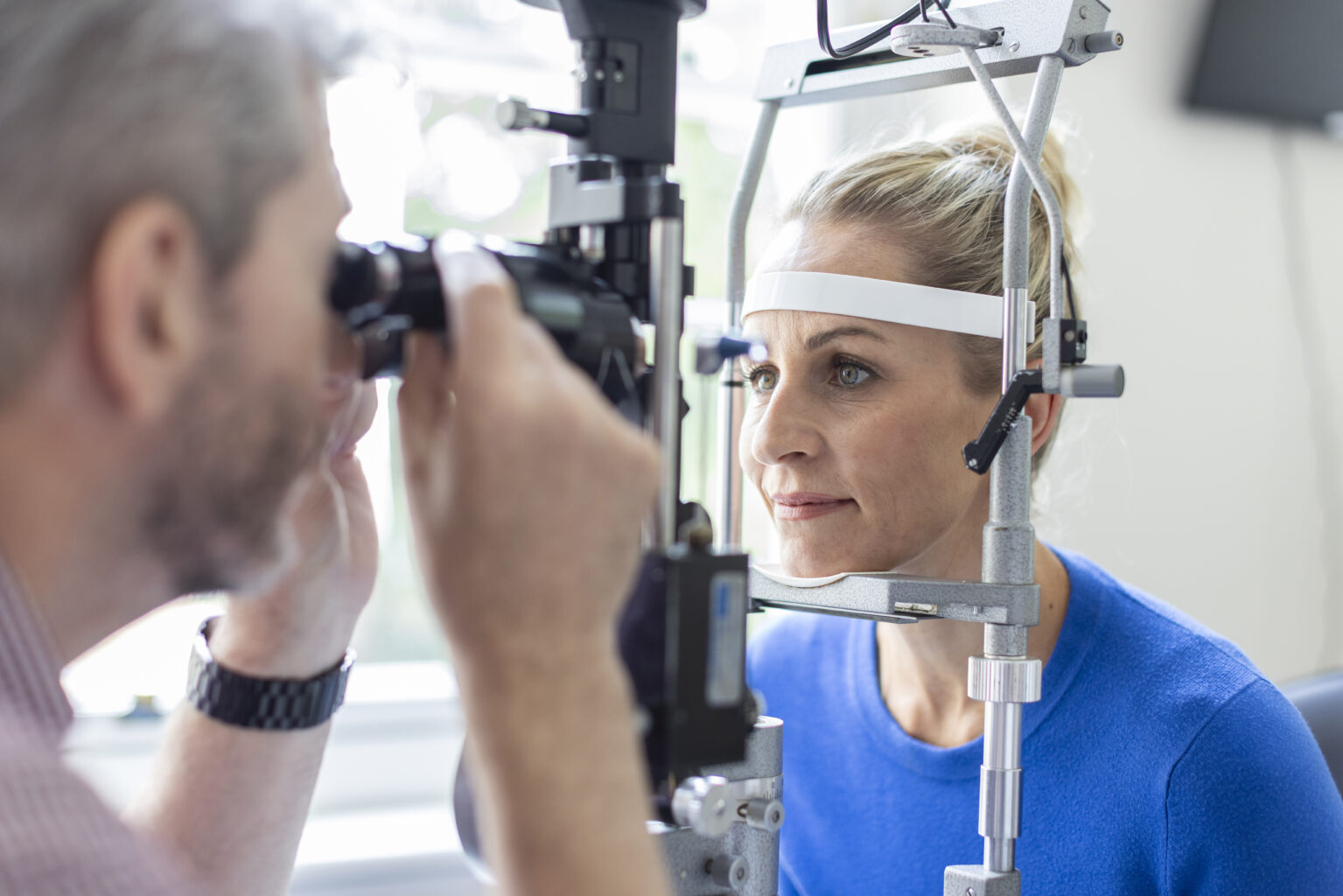Everything you need to know
OCT scans can be conducted as part of a general eye exam and provide insight into the health of your retina and optic nerve. The scan uses a low-powered laser to create a 3D colour-coded image of the retinal layers and optic nerve.
OCT can help detect potential retinal diseases and other visual issues early, including:
- Glaucoma. This is where pressure builds up in your eye, which can damage your optic nerve.
- Diabetic retinopathy. Diabetes can lead to damage of the small blood vessels in your eye, leading to vision loss. However, with treatment, diabetes-related retinopathy can be controlled.
- Age-related macular degeneration. This is an age-related progressive disease that leads to sight loss. However, treatments are available for some forms.
- Macular hole. This happens when the retina pulls apart, creating a hole. This can be treated with surgery.
Eye health should always be taken seriously. At St John & St Elizabeth Hospital, we recommend having an OCT scan if you’re over a certain age, have diabetes or are at risk of developing certain conditions, or notice any issues with your vision.
OCT technology is high-resolution imaging technology that provides non-invasive, real-time imaging with micron-scale resolution. It allows ophthalmologists to assess the thickness and integrity of various layers of your retina, detect abnormalities, and monitor changes over time.
If you are worried about your vision, or would simply like your eye health checked, contact our Eye Clinic and we will book you in with one of our expert Ophthalmologists.
Before
When you come in for your appointment, your ophthalmologist will ask you about any symptoms and your medical history. They will then conduct a comprehensive examination of your eyes and vision.
The OCT scan can be done during your eye appointment and will take a handful of minutes. The results will be ready immediately and the ophthalmologist will discuss these with you.
During
An OCT scan begins with you resting your chin on a support.
The OCT machine scans one eye at a time. You will focus your gaze on a green target within the machine and may also see a red line while your eye is being scanned. Nothing will touch your eye.
Once complete, your consultant will have a 3D image of the retina and an accurate picture of the health of your retina. Your consultant will go through the results with you meaning you can leave your appointment knowing your next steps.
After
If your OCT scan shows your retina to be healthy and your eye exam picks up no issues, you will have a clean bill of eye health. If the OCT picks up some issues, your consultant will discuss these with you, explain your options, and may also arrange some further tests and a follow-up appointment.
How to pay for your treatment
If you’re… paying for yourself
Did you know you don’t need private medical insurance to come to St John & St Elizabeth Hospital? As a self-pay patient, you can access safe, outstanding quality health care at times to suit you.
For scans and tests, as well as to see most consultants, you’ll still need to be referred by a medical professional like your GP, but as a self-pay patient, the process is more straightforward. You won’t need authorisation from an insurance provider, and you’ll have greater choice of consultant and appointment times.
If you’re… insured
St John & St Elizabeth Hospital is approved by all major medical insurance companies. If you have a personal private health insurance policy, or your company provide it for you, you can use it to pay for your care from your initial consultation through to treatment, surgery and aftercare such as physiotherapy. Not all private health insurance plans cover the same things. It’s very important to check exactly what you are covered for with your insurance provider.

